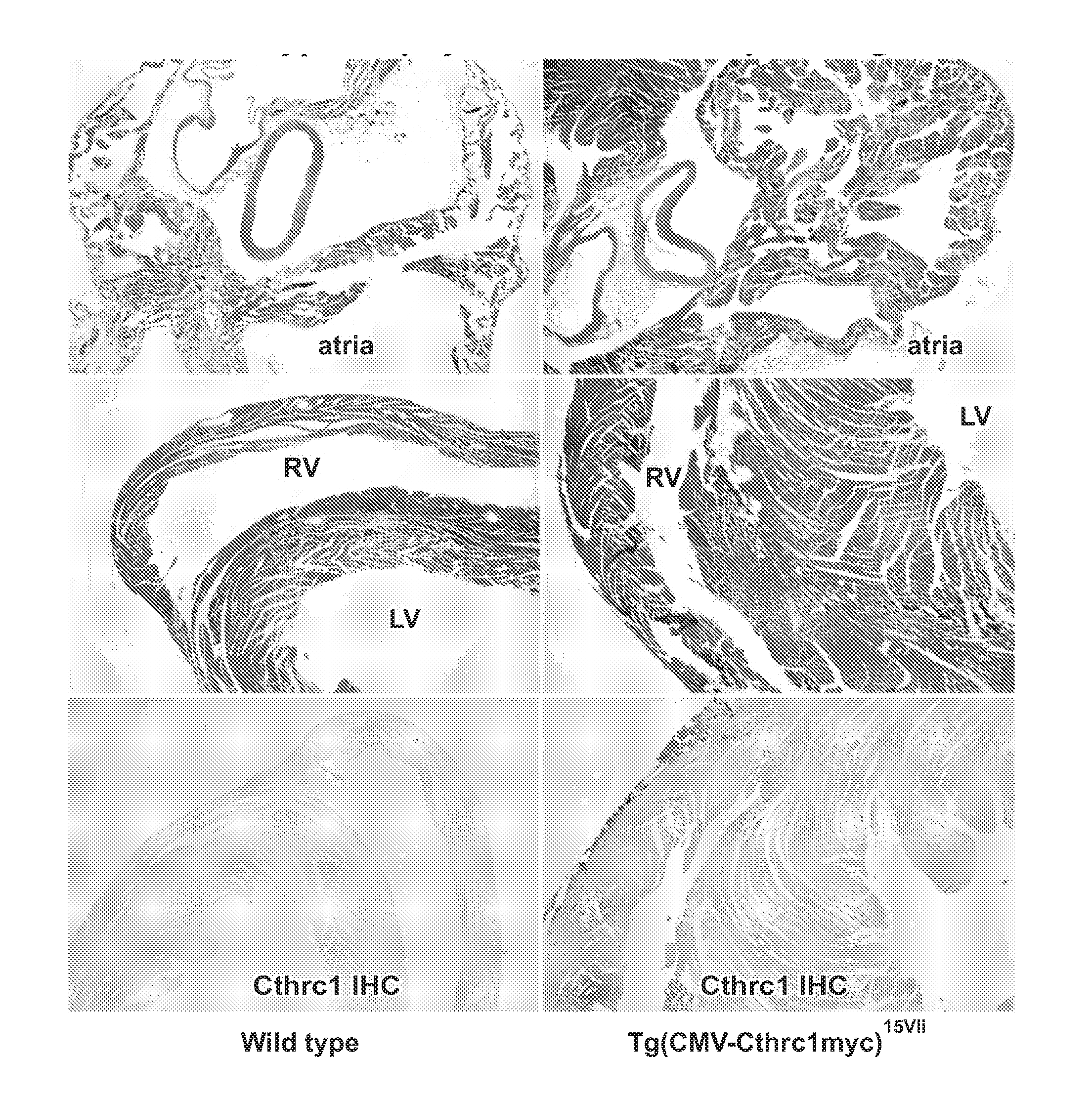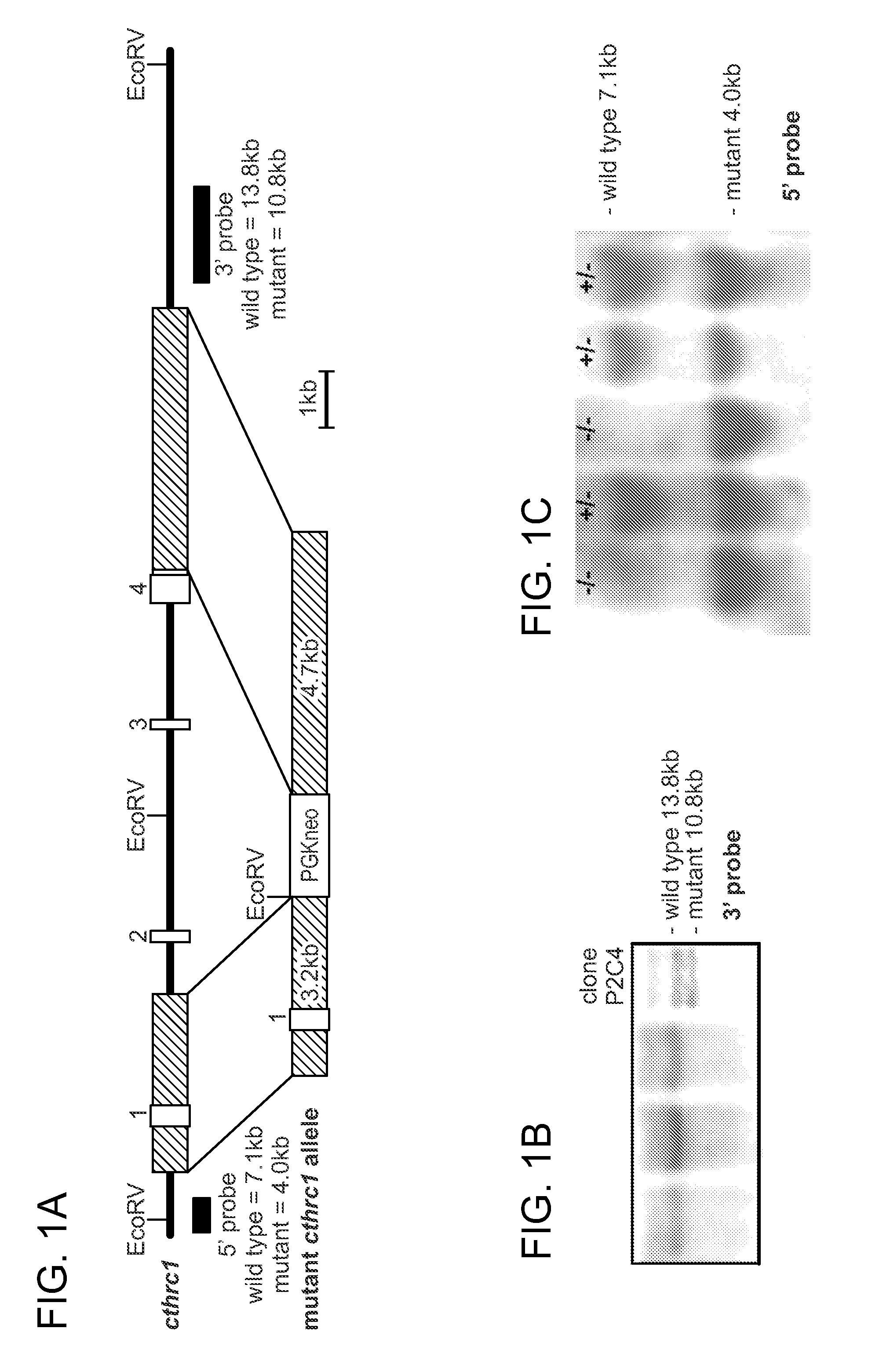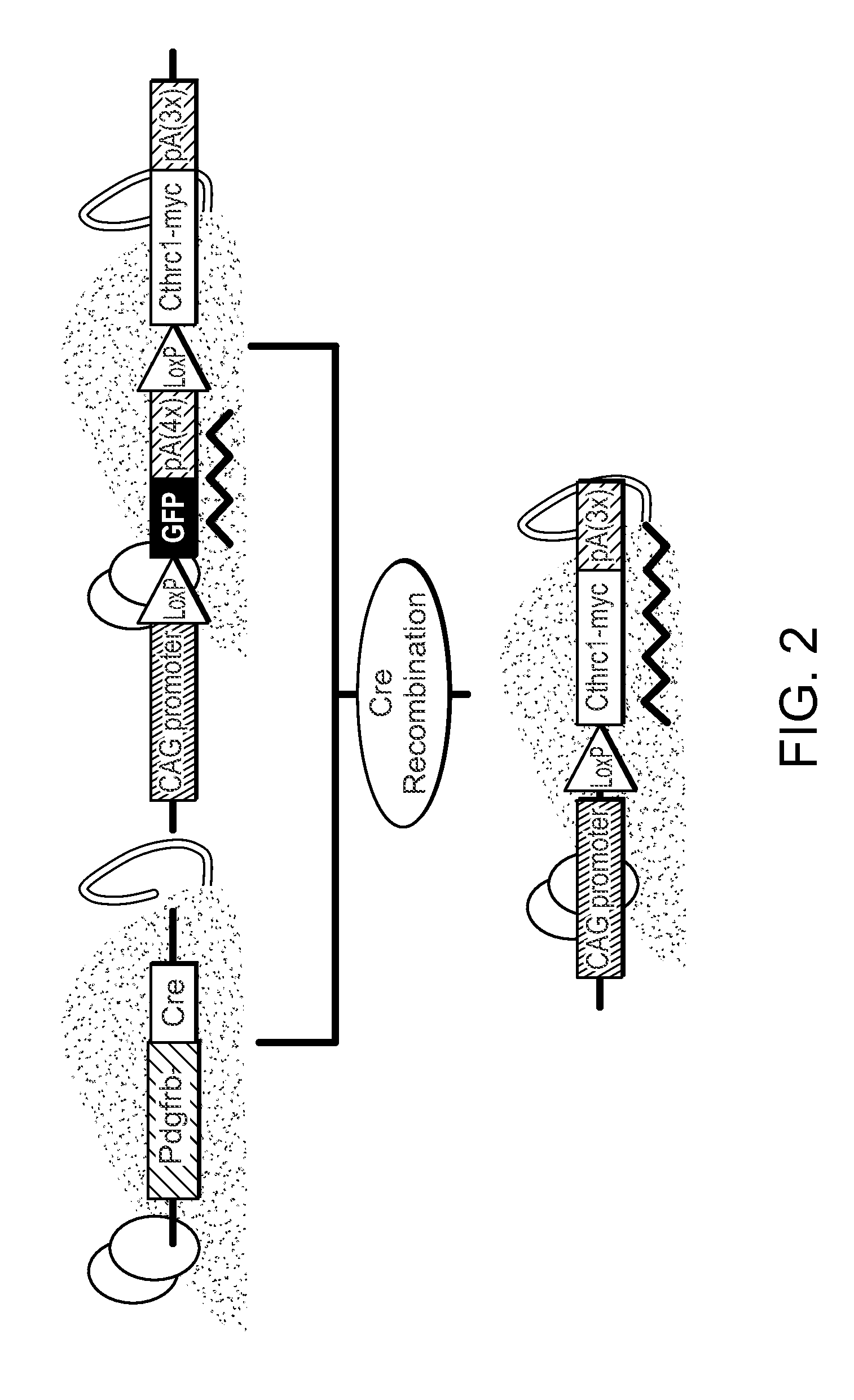Compositions and methods for the treatment of cardiac and vascular disease
a technology for vascular disease and compositions, applied in the field of compositions and methods for the treatment of cardiac and vascular disease, can solve the problems of limited therapeutic options for improving cardiac performance, many approaches including those using angiogenic growth factors to promote vascularization of ischemic tissues have failed clinical trials, and the ability to compensate outward remodeling of the vessel is limited, so as to reduce expression or activity, increase blood vessel formation or remodeling, and improve cardiac performance
- Summary
- Abstract
- Description
- Claims
- Application Information
AI Technical Summary
Benefits of technology
Problems solved by technology
Method used
Image
Examples
example 1
Generation of Cthrc1 Deficient Mice and Cthrc1 Overexpressing Mice
[0198]To study the consequences of Cthrc1 deficiency in the cardiovascular system, a novel targeted Cthrc1 allele was developed by deletion of exons 2-4 (Cthrc1tm1Vli, FIG. 1A). The Cthrc1 null allele replaced exons 2-4 with a neomycin cassette using the targeting vector pKO Scrambler NTKV-1905 (Stratagene). Exon 1 contains a 5′ untranslated sequence and the N-terminal 52 amino acids of Cthrc1, including the signal sequence and an additional 20 amino acids, which includes the propeptide3. Because the propeptide has not been associated with a function, it was anticipated that the mutant allele would result in a Cthrc1 null phenotype.
[0199]Embryonic stem cell clones were screened by Southern blotting and positive clones injected into blastocysts (FIG. 1B). Two chimeras were obtained and bred with C57BL / 6 mice, producing offspring with agouti coat color indicating germ line transmission. Their genotypes were verified by ...
example 2
Detection of Cthrc1 in Plasma
[0206]Without being bound to a particular theory, it is likely that Cthrc1 is a positive ionotrope, consistent with hormone-like activities of Cthrc1. To obtain additional evidence for Cthrc1 as a circulating hormone, an ELISA was developed for detection of Cthrc1 in human plasma. In healthy volunteers Cthrc1 plasma levels ranged from 16-440 ng / ml. An enzyme-linkedin immunosorbent assay (ELISA) was developed to measure Cthrc1 levels in human plasma. Cthrc1 levels in human plasma in healthy male volunteers ranged from 16 ng / ml to 440 ng / ml (FIG. 3). In most samples levels were at the low end of the spectrum close to the detection limit of the assay.
[0207]Purified Cthrc1 was radiolabeled with 125I and infused into anesthetized Cthrc1 deficient mice via the left carotid artery. Using the clearance curve, the half-life of Cthrc1 in plasma was calculated to be 146 minutes (GraphPad Prism software, FIG. 4).
example 3
Expression of Cthrc1 in Remodeling Arteries
[0208]Immunohistochemistry for Cthrc1 was performed on newborn pups (1 day old) of wild-type and Cthrc1 deficient mice. In addition, a growing testicular germ cell tumor was also examined for Cthrc1 expression. After birth the cardiovascular system undergoes dramatic changes. These changes include increased perfusion of the lung, closure of the foramen ovale, closure of the ductus arteriosus, and regression of the umbilical vessels. In addition, blood pressure increases gradually from systolic 40-50 mm Hg in late stage fetuses (Moscoso et al., 1983; Struijk et al., 2008) requiring extensive vascular remodeling.
[0209]Prominent expression of Cthrc1 was observed in mural cells of many blood vessels, especially pericytes of postcapillary venules (FIGS. 5A and 5B) as well as in cells of the adventitia surrounding smooth muscle cells of muscular veins and elastic arteries (FIG. 5D-5F). In the ductus arteriosus undergoing closure, Cthrc1 was expre...
PUM
| Property | Measurement | Unit |
|---|---|---|
| Volume | aaaaa | aaaaa |
| Volume | aaaaa | aaaaa |
| Volume | aaaaa | aaaaa |
Abstract
Description
Claims
Application Information
 Login to View More
Login to View More - Generate Ideas
- Intellectual Property
- Life Sciences
- Materials
- Tech Scout
- Unparalleled Data Quality
- Higher Quality Content
- 60% Fewer Hallucinations
Browse by: Latest US Patents, China's latest patents, Technical Efficacy Thesaurus, Application Domain, Technology Topic, Popular Technical Reports.
© 2025 PatSnap. All rights reserved.Legal|Privacy policy|Modern Slavery Act Transparency Statement|Sitemap|About US| Contact US: help@patsnap.com



